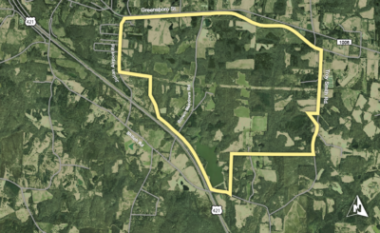Buried on page 293 of the state budget is an allocation that could be a game changer for Greensboro.
The state budget has been passed by the General Assembly with overwhelming bipartisan votes and Gov. Roy Cooper has publicly announced that he will sign the budget into law when it reaches his desk.
In the section of the state budget titled “Economic Development Project Appropriation,” a total of $320 million dollars is allocated to the Greensboro-Randolph Megasite as an economic incentive for a development that involves a private investment of at least $1 billion in private funds that would create at least 1,750 new jobs.
The bill states that the project could be expanded in three years for a total private investment of $3 billion and the creation of 3,875 new jobs.
The money is specifically $100 million for site work and wetlands mitigation, $35 million for roadwork and wetlands mitigation and $185 million to reimburse the manufacturer for costs related to site work, road work and wetlands mitigation.
The fact that the money is being made available indicates that the state believes the site is under serious consideration for a major industrial project. There is no indication in the bill as to the identity of that manufacturer other than the figures in the bill.
In October, Toyota announced that it will be spending about $3.4 billion in automotive batteries in the US through 2030. A press release from Toyota stated that Toyota was aiming to start production of batteries in the US in 2025 with an investment of approximately $1.29 billion and the creation of 1,750 new jobs.
Toyota is familiar with the Greensboro-Randolph megasite. In 2018 the Greensboro-Randolph Megasite was in the running for a $1.6 billion Toyota and Mazda automotive assembly plant.
The Toyota and Mazda plant went to Alabama, not Randolph County, but reports at the time indicated that the Greensboro-Randolph Megasite was the runner-up for that facility.
The Greensboro-Randolph Megasite is entirely in Randolph County, and Greensboro would provide water and sewer service to the site. The development of the site began in 2011 and the state bill notes that both the Golden L.E.A.F. and the North Carolina Railroad have invested in the development of the property.


Probably end up in Randolph – politics & taxes.
Why would GSO provide water & sewer to a Rockingham county site unless it planned to annex it at some point?
It will create jobs. The site is less than 30 min from Greensboro and will surely have commuters coming from Guilford County. The site will be equipped with adequate electricity and internet to service a large manufacturing facility such as car manufacture.